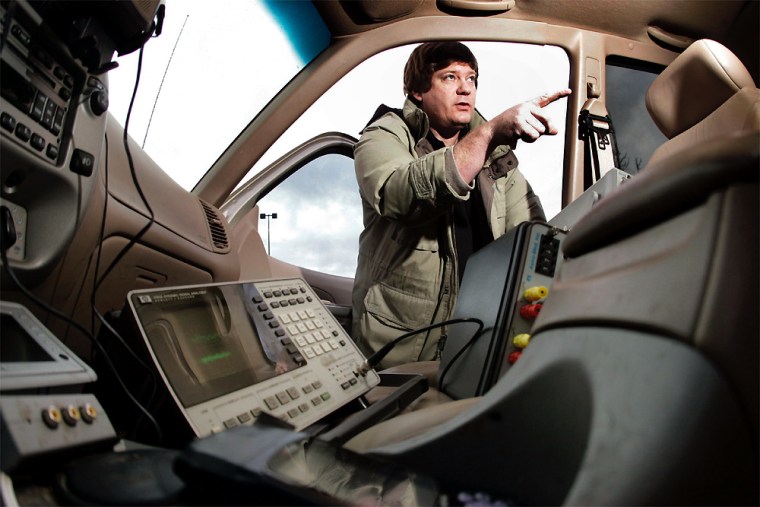Nearly every day, Larry Park rises early and drives the Pacific Northwest looking for earthquakes.
In the bed of his beige pickup, the computer expert has installed a rotating 3-foot (1-meter) disc that he says picks up certain vibrations that telegraph impending quakes around the world — temblors that conventional seismographs cannot measure.
This week, he said his data indicated another Big One brewing beneath the same area of south Asia where an earthquake unleashed tsunamis last weekend that killed more than 100,000 people.
He warned the governments of India, Indonesia and Australia. India, fearing another tsunami, took him seriously enough to issue a public warning. Tens of thousands of Indians fled their coastal homes in panic Thursday, but no quake or giant waves materialized.
Authorities now are chagrined they acted on the advice, since Park is not a geologist. The Indian science minister later dismissed Park’s prediction as “hogwash,” and one American scientist called it “gobbledygook.”
'Tough decision'
Park, standing next to his truck outside of a strip mall, said there still is a chance that his prediction will come true.
“It was a tough decision, but it was at least important to pass the information on,” said Park, who runs Terra Research and Consulting Services from his home in Manning, Ore., near Portland.
Park, 46, says he has been right before. Last week, Park claims he detected signs of a major earthquake 22 hours and 31 minutes before the temblor that shook Sumatra over the weekend.
On his Terra Research Web site, Park sells copies of his detection system and offers around-the-clock technical support, as well as a self-published book on his philosophy and methods for $104.
None of Park’s work is peer-reviewed by other earthquake experts, nor is it published in scientific journals.
How the prediction got out
In the wake of the panic in India, Science and Technology Minister Kapil Sibal said his department received the warning, and passed it along to the Home Ministry, which issued an alert.
Sibal said in a televised news conference that Park claimed to have sensors and equipment to “suggest there was a possibility of an earthquake. So, on the basis of this communication, for anyone to reach a conclusion that a tsunami will hit the eastern coast of India is unscientific, hogwash and should be discarded.”
Park gives a slightly different version of events. He passed information about his earthquake predictions to filmmaker Mike McNulty, who last March sent letters to nine Asian governments, including India, that warned of earthquake threats. McNulty conveyed the latest warning by telephone and e-mail to the Indian, Indonesia and Australian embassies, Park said.
McNulty said that “the forecast is January 1 — it isn’t game over yet.”
“I take issue with the science minister in that if he thought our science was hogwash then why in heaven’s name did the authorities authorize an evacuation?” McNulty said from his home in Loveland, Colo.
'Technical gobbledygook'
Geologists in the United States dismiss Park’s work.
“It’s technical gobbledygook,” said Bill Steele, spokesman for the Pacific Northwest Seismograph Network at the University of Washington, which works in conjunction with the U.S. Geological Survey to monitor earthquakes in the region. “He throws out scientific terms — but none of it holds together.”
Park said he is aware that many scientists discount his findings.
“It’s a shame. I understand their difficulty,” he said. “I’ve offered them a look at the equipment, but so far no one has come out to see it.”
Associated Press writer Rukmini Callimachi contributed to this report.
